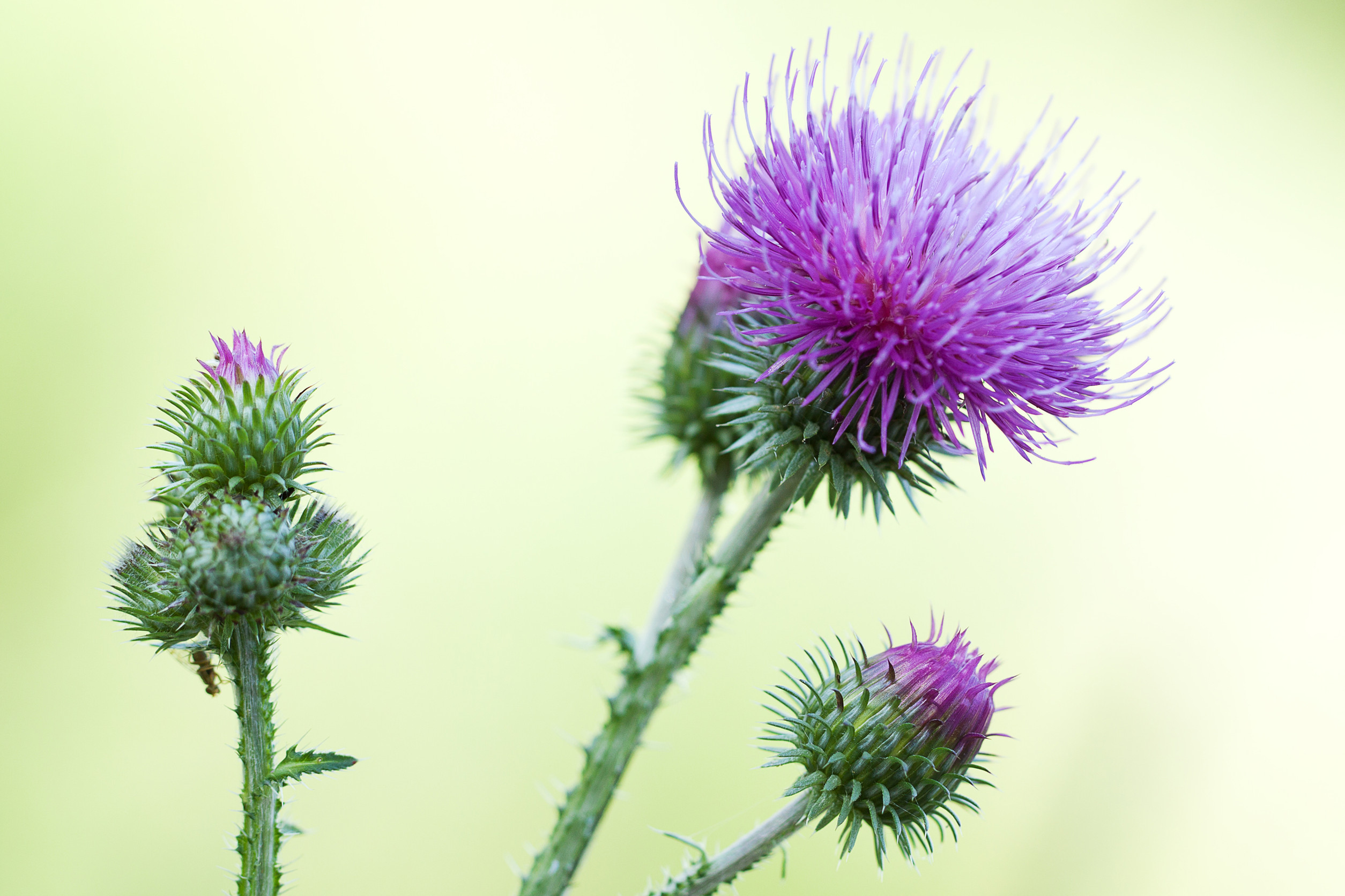If you’ve spotted tall, spiky weeds with purple blooms invading your lawn or garden, chances are you’re dealing with thistle. Now, you need to know how to control thistle weeds. While technically a biennial or perennial, thistle is most aggressive and visible in summer, making it a real nuisance during the warmest months.
In this guide, we’ll cover:
- Why thistle is a problem in summer
- Identifying thistle weeds
- Manual removal techniques
- Chemical control options
- Natural and organic methods
- Preventing future growth
What Makes Thistle a Problem in Summer?
Thistle weeds are some of the most stubborn and invasive plants that can take over lawns, gardens, and fields. With their deep roots and prickly leaves, they can be difficult to remove once established. However, with the right strategies, you can effectively control and even eliminate thistles from your property.
Varieties like Canada thistle and bull thistle—take root earlier in the year, but the bolts, flowers, and spreads seeds in late spring through summer. Its spiny leaves make it unpleasant to walk through or mow over, and its deep roots make it hard to kill.
Need Help?
Our lawn care experts can help you take back your yard with targeted weed control strategies.
👉 Explore our weed control services
1. Identifying Thistle Weeds
Before tackling thistles, make sure you’re dealing with the right plant. Common types include:
- Canada Thistle (Cirsium arvense) – Perennial with deep roots and purple flowers.
- Bull Thistle (Cirsium vulgare) – Biennial with spiny leaves and large purple blooms. Also called Texas Thistle.
- Musk Thistle (Carduus nutans) – Tall with nodding flower heads.
Thistles have spiky leaves, purple or pink flowers, and a deep taproot system that makes them hard to eradicate.

2. Manual Removal Techniques
For small infestations, hand-pulling can work if done correctly:
- Pull young plants – Remove them before they flower and spread seeds.
- Use a weeding tool – A dandelion digger or hori-hori knife helps extract the entire root.
- Wear gloves – Thistles are prickly and can cause skin irritation.
⚠️ Important: If the root breaks, the thistle may regrow, so remove as much of it as possible.
3. Chemical Control Options
For larger infestations, herbicides may be necessary:
- Selective herbicides (like 2,4-D or dicamba) target broadleaf weeds without harming grass.
- Non-selective herbicides (like glyphosate) kill all plants, so use carefully.
- Apply in early growth stages – Younger thistles are easier to kill.
🔹 Tip: Always follow label instructions and avoid spraying on windy days to prevent drift.
4. Natural and Organic Methods
If you prefer chemical-free solutions, try these:
- Vinegar spray – A mix of white vinegar, salt, and dish soap can burn foliage (but may not kill roots).
- Boiling water – Pouring hot water on thistles can weaken them.
- Smothering – Cover thistles with cardboard or mulch to block sunlight.
- Goats or sheep – These animals love eating thistles and can help control them naturally.
5. Preventing Future Thistle Growth
Stopping thistles before they spread is key:
- Maintain a healthy lawn – Thick grass crowds out weeds.
- Mow regularly – Prevents thistles from flowering and seeding.
- Use pre-emergent herbicides – Stops seeds from germinating.
- Monitor and act early – Remove thistles as soon as they appear.
Thistle Weed Control Methods Comparison
| Method | Best For | Effectiveness | Pros | Cons |
|---|---|---|---|---|
| Hand-Pulling | Small infestations, organic gardens | Moderate (if roots fully removed) | Chemical-free, immediate results | Labor-intensive; may regrow if roots remain |
| Herbicides (Selective) | Large thistle patches in lawns | High | Targets weeds without harming grass | Chemical use; may require multiple applications |
| Herbicides (Non-Selective) | Severe infestations, non-garden areas | Very High | Kills all vegetation | Harmful to nearby plants; environmental concerns |
| Vinegar Spray | Small weeds, organic control | Low to Moderate | Natural, no synthetic chemicals | Doesn’t kill deep roots; may harm soil microbes |
| Boiling Water | Patches in driveways/walkways | Low | Chemical-free, simple | Temporary solution; kills surface growth only |
| Smothering (Mulch/Cardboard) | Garden beds, preventing regrowth | Moderate (over time) | Blocks sunlight, improves soil | Slow; not instant |
| Grazing Animals (Goats/Sheep) | Large fields, eco-friendly control | High | Natural, reduces seed spread | Requires space and animal access |
Still not sure which method to use? Read our article, “When to Hand-Pull Weeds vs Using Herbicides.”
Final Thoughts
Controlling thistle weeds requires persistence, but with a combination of manual, chemical, and natural methods, you can reclaim your garden. The best approach depends on the size of the infestation and your preference for organic or chemical solutions.
Have you battled thistles before? Share your tips in the comments below!


